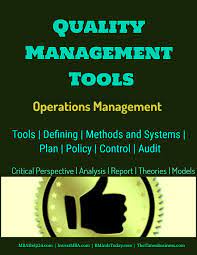To avoid stagnation and assure success, quality management must be a continual and constantly evolving process. To accomplish this, a variety of quality management strategies can be used. Total Quality Management (TQM), Six Sigma, Lean Manufacturing, just-in-time (JIT) manufacturing, and Kaizen are some of the most popular and effective quality management strategies. To select the best quality management strategy for your organisation, examine numerous aspects, including the nature of your business, your resources, and your goals. Continue reading to discover 7 quality management practises that can ensure success in any firm!
The 7 Methods of Quality Management
Quality control is a vital component of any successful organisation. Companies may ensure that their products and services meet the highest standards while also managing costs and meeting consumer expectations by employing quality management systems. Plan Do Check Act (PDCA), root cause analysis, Six Sigma, 5 Whys, Failure Mode and Effects Analysis (FMEA), Statistical Process Control (SPC), and Design of Experiments are the seven most prevalent quality management methodologies (DOE). Let us examine each strategy in further detail.
1) Plan, Do, and Act
The abbreviation PDCA stands for Plan Do Check Act, and it is a cyclical process that assists businesses in identifying problems, developing solutions, and testing those answers to fix the issue. The planning phase of the cycle is where the problem is identified and solutions are established. The "Do" phase entails putting the intended solution into action and gathering data. In the "Check" phase, this data is utilised to assess the effectiveness of the solution. Ultimately, in the "Act" phase, any necessary remedial action is taken, and the process is repeated until the intended results are obtained.
2) Investigation of the root cause
Root Cause Analysis (RCA) is a quality management technique that aids in determining the root cause of a problem or system failure. This strategy entails breaking down the problem's symptoms until the root cause is uncovered. A problem's root cause is frequently linked back to an organisational system, method, or other contributing component that must be addressed in order to fully remedy the issue. RCA is a critical technique for avoiding future problems by addressing any systemic flaws that may exist.
3) 6 Sigma
Six Sigma is a quality improvement process based on data that aims to reduce faults while increasing customer satisfaction. The methodology depends on data gathering and analysis to discover the cause of problems and measure the success of solutions. It is a project-based strategy that assists firms in identifying and eliminating waste, improving processes, and optimising efficiency.
4) 5 whys
The 5 Whys technique is a systematic approach to problem resolution that entails asking why five times to determine the fundamental cause of a problem. This method is predicated on the premise that by asking why repeatedly, you can get to the heart of an issue and generate effective solutions.
5) Failure Mode and Impacts Investigation
Failure Mode and Effects Analysis (FMEA) is a quality management tool for identifying potential failure modes and their consequences. This technology detects high-risk locations and enables organisations to take corrective action to avoid or lessen those hazards. FMEA also assists companies in determining the core cause of quality issues and potential solutions.
Statistical Process Control (SPC)
SPC is a quality management approach used to identify and control variance or "noise" in manufacturing processes. This technique depends on collecting and analysing data over time to detect process drift and enable businesses to make timely adjustments to assure consistent outputs.
7) Experiment Design
Design of Experiments (DOE) is a tool for testing a hypothesis by comparing the outcomes of various trials. The goal of DOE is to create an experiment to test a hypothesis in order to determine the circumstances that allow an organisation to achieve its goals. This method ensures that judgements are based on data rather than speculation. Conclusion These seven quality management approaches are all important tools that may help any firm succeed. Each strategy has advantages and disadvantages and should be chosen depending on the organization's specific needs and goals. Quality management is vital for any organization's performance, regardless of the technique used. Organizations may generate better goods and services, minimise defects, enhance customer satisfaction, and maximise efficiency by applying the correct quality management practises.


No comments yet